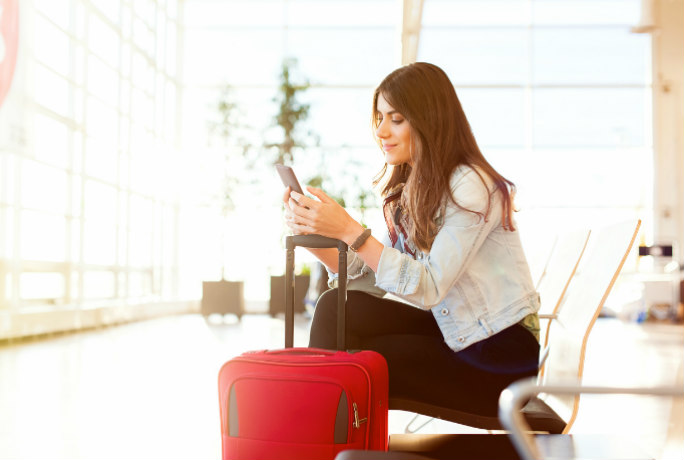There's something serendipitous about travel, and nothing exemplifies the term more than showing up at the airport without a ticket and hoping to get somewhere. Flying standby was once just that: a method of saving big bucks on airfare when your schedule was immensely flexible.
Sadly, those days are gone. Across the board, U.S. legacy airlines (as well as most international airlines) have stopped letting travelers fly without a pre-purchased ticket.
In the States, this change has been partly due to security concerns in a post-9/11 world -- and partly due to capacity algorithms that have enabled airlines to fill more planes with paying patrons. Today, what mostly happens is that a paying passenger might apply for a seat on an earlier flight on a day that they already have a ticket for (say, the 9 a.m. flight from Detroit to Orlando instead of their ticketed 1:30 p.m. flight between those same airports). Here's what you need to know about flying standby.

Can I still fly standby?
Can you simply show up at the airport without a ticket and expect to get somewhere for cheap? The short answer is no. Airlines no longer allow you to wait around at the counter in hopes of snagging a "standby flight" and filling the last seat of a departing flight. And buying a ticket on the day of a flight would do the opposite of saving you money -- last-minute tickets are staggeringly expensive.
"Flying standby" these days usually refers to making an unconfirmed (i.e., without a reserved seat), same-day flight change, which requires a paid ticket that's been purchased in advance. There's also the option of a confirmed same-day change, which essentially guarantees you a seat for another flight on the same day as your original ticket -- for a fee that's less than the typical change fee. (This is cheaper because you're taking the gamble that the other flights haven't all filled up yet.) For unconfirmed standby, there might also be a fee.

What's a "buddy pass?"
The only instance where "flying standby" in the original sense -- just turning up at the airport and hopping on a flight -- still works is if you know someone who works for (or is retired from) an airline. Airline employees are issued a handful of buddy passes per year, which they can distribute to friends and family. They enable the pass holder to fly standby for only the cost of the ticket's taxes and fees. But, as you'd expect, you'll have to wait at the airport until a flight has an open seat. The issuance of buddy passes varies dramatically from airline to airline, with specifics kept under wraps as proprietary information. Still, if you're looking to travel standby and save a bundle, your best bet is to befriend someone that works for an airline.
How does flying standby work?
First things first: Know the rules. Some airlines will let you phone in or register online to get on the standby list, but these options may only be available for confirmed same-day changes. Others may require you to show up at the airport and speak with an agent or at least use the kiosks at the airport. Each airline has a designated window in which you're allowed to make that change, too, whether it's a few hours from your scheduled departure or after midnight the day of or 24 hours before your ticketed flight.

And there may be further restrictions. If you already have a ticket, JetBlue, for one, specifically states that there's no standby flying for routes that only fly once a day, and you can only standby for the flight right before yours. Many limit the options to your original departure and destination airports and flights between certain regions (most often the U.S. and Canada and sometimes the Caribbean).
Whether you're a ticketed passenger or you have a buddy pass, you'll want to show up as early as possible if you can't get on the list by phone or online. In most cases, this means showing up a few hours before the first flight of the day. Because passengers are placed on the standby list on a first come, first served basis, this will maximize your chances of success. If you're using a buddy pass, be prepared to stay for the last flight of the day since airlines will place paying customers first. And don't give up or leave until the flight you're trying to get on actually takes off; you never know when last-minute changes might occur.
Related: The Best Airline Credit Cards

What are my other options for cheaper, flexible travel?
Airlines have become eerily efficient at filling up planes, which has given them greater leverage to keep prices high and steady. If you're looking to save on last-minute travel, look towards budget carriers and aim to fly at inopportune times -- flights that depart very early or late. If you have time to plan, aim to travel on days that are less frequented by business travelers. On a typical week, Saturday, Tuesday, and Wednesday are the best days to travel and avoid the business commuters, which can lead to lower fares.
